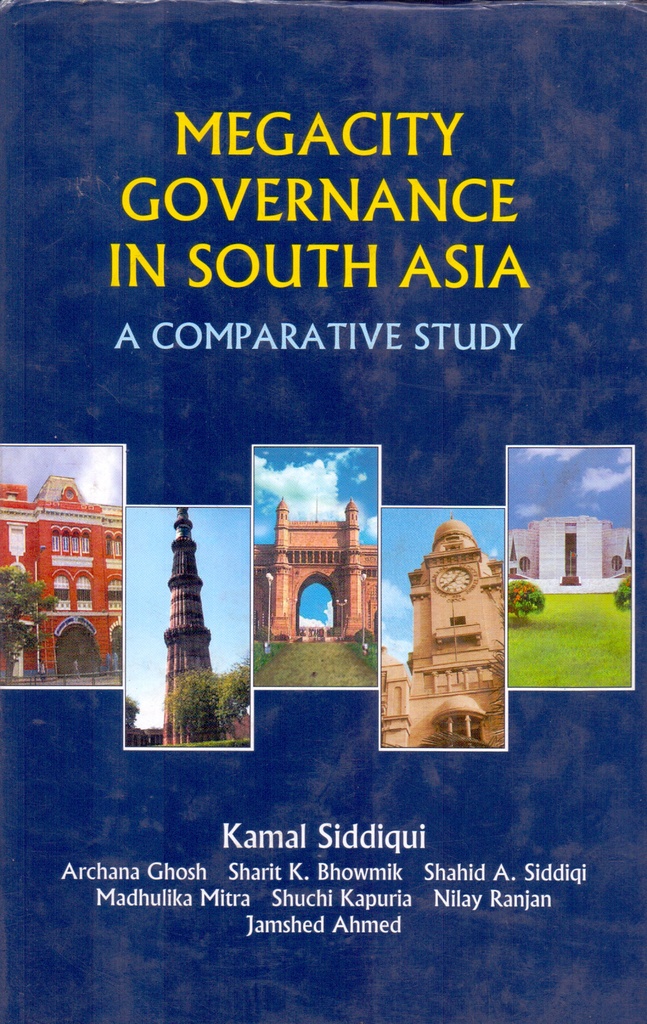
- Shop
- Megacity Governance in South Asia: A Comparative Study
Megacity Governance in South Asia: A Comparative Study
| Language: English |
Tags :
Book Info
This is a pioneering study comparing the governance arrangements in the five megacities (cities with a population of around 10 million) of South Asia, namely Dhaka in Bangladesh, Kolkata, Mumbai and Delhi in India and Karachi in Pakistan within a common analytical framework. The book is divided into seven chapters. The first and introductory chapter lays down the theoretical underpinnings and methodology of the study, besides identifying the major urbanization trends in South Asia. In each of the five city chapters, the trends in the quality and extent of city services and the major components of good governance, namely the existing legal framework of municipal government, accountability, transparency, decentralization, efficiency, coordination, minimization of corruption, financial management, personnel practices, participation/empowerment, equity, etc are first discussed and delineated. An attempt is then made to explain these in terms of the city power structure, resistance from within the municipal government, the degree of social capital and the strength of mobilization among the intended beneficiaries (in particular, the poor and the women) of municipal services. In the last and concluding chapter, the governance experiences of the five megacities are compared in order to see the similarities, differences and innovations, and at the same time to suggest ways and means to move forward from the existing situation. Much of the data for this study were generated through several rounds of surveys focusing on the key players associated with the governance of the megacities as decision-makers, implementers, observers and beneficiaries (both actual and potential) of the civic services. Given the rapid pace of urbanization in South Asia, and the crucial role of these megacities in the development of their respective countries, the benefits of such a study can hardly be exaggerated. The findings and recommendations of the study will, hopefully, be useful both to academics and those involved in urban governance.

Kamal Siddiqui
Kamal Siddiqui is a leading authority on local government in South Asia. Educated in the Universities of Dhaka, Leeds and London, he combines in him solid academic work with the practical experience of a civil servant, working at both grassroots as well as highest levels of policy-making and monitoring policy implementation. His important publications in the field include Megacity Governance in South Asia: A Comparative Study (Dhaka: UPL, 2004), Overcoming the Governance Crisis in Dhaka City (Dhaka: UPL, 2000), Local Governance in Bangladesh: Leading Issues and Major Challenges (Dhaka: UPL, 2000) and Local Government in South Asia: A Comparative Study (Dhaka: UPL, 1992; a Chinese translation of the book was brought out by the Ministry of Civil Affairs of China

কামাল সিদ্দিকী
Kamal Siddiqui is a leading authority on local government in South Asia. Educated in the Universities of Dhaka, Leeds and London, he combines in him solid academic work with the practical experience of a civil servant, working at both grassroots as well as highest levels of policy-making and monitoring policy implementation. His important publications in the field include Megacity Governance in South Asia: A Comparative Study (Dhaka: UPL, 2004), Overcoming the Governance Crisis in Dhaka City (Dhaka: UPL, 2000), Local Governance in Bangladesh: Leading Issues and Major Challenges (Dhaka: UPL, 2000) and Local Government in South Asia: A Comparative Study (Dhaka: UPL, 1992; a Chinese translation of the book was brought out by the Ministry of Civil Affairs of China


